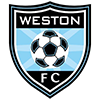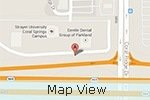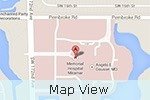Club Foot
Club foot is a common foot deformity present at birth where in one or both the feet are turned towards an inward and downward position. It is more common in boys than girls. It is also called as talipes equinovarus.
Club foot is of two types:
- Postural or positional club foot – This occurs as a result of abnormal positioning of the fetus in the mother’s womb. The foot is flexible and can be moved to a near normal position after birth.
- Rigid or fixedclub foot – In rigid form, the foot is rigid or stiff as the muscles at the back of the lower leg become very tight.
Although club foot does not cause any pain, it can affect the physical appearance and the child’s ability to walk. Children with club foot may have abnormal foot where,
- Foot may be slightly smaller than the normal
- The front of the foot may be twisted toward the other foot
- Stiff muscles in the lower leg which may affect range of motion
The exact cause of clubfoot is unknown. Genetic and environmental factors may have a role in developing the condition. Other congenital malformations such as spina bifida may also cause club foot.
Treatment options include:
Stretching and Casting -It is also known as the Ponseti method. The foot is manipulated into a correct position and a cast is placed to maintain that position. Repositioning and recasting is repeated for every 1 to 2 weeks for 2 to 4 months, each time bringing the foot toward the normal position. After realignment of the foot, it is maintained through splinting with braces to keep the foot in the corrected position. The brace is worn for 3 months following which it is worn only at night for up to 3 years, to maintain the correction.
Club foot repair –It is surgical repair of the birth defect which involves lengthening or shortening the tendons (tissues that help attaches muscles to bones) of the foot.
Osteotomy – It is a surgical procedure where a part of the bone is cut to shorten or lengthen its alignment. The procedure involves removal of a wedge shaped bone located near the damaged joint and the remaining bones are joined together and secured using the staples or pins.
Fusion or arthrodesis – It is a surgical procedure where two or more bones are joined or fused together. Bone for fusion will be taken from other parts in the body. Metal pins or plates may be used to hold the bones in position.
Flatfoot
Flatfoot, also known as “fallen arches” or Pes planus, is a deformity in children’s feet in which the arch that runs lengthwise along the sole of the foot has collapsed to the ground or not formed at all. Flatfoot is normal in the first few years of life as the arch of the foot usually develops between the age of 3 and 5 years. Flatfoot can be rigid or flexible. Flexible flatfoot usually resolves without any treatment needed unless pain is involved. Rigid pediatric flatfoot however can cause joint pain in the leg when walking or an aching pain in the feet and usually requires intervention.
Causes and Risk Factors
Pediatric flat foot is a common condition that can run in families. it is often caused by loose connections between joints and excess baby fat deposits between foot bones which make the entire foot touch the floor when the child stands up. A rare condition called Tarsal Coalition can also cause flatfoot. In this condition, two or more bones of the foot join together abnormally causing stiff and painful flat feet.
Signs and Symptoms
Children with flatfoot deformity may have one or more of the following signs and symptoms:
- Inside arch of the foot is flattened
- Heel bone may be turned outward
- Inner aspect of the foot may appear bowed out
- Pain in the foot, leg, knee, hip, or lower back
- Pain in the heels causing difficultly with walking/running
- Discomfort with wearing shoes
- Inability to bear weight on affected foot
- Tired, achy feet with prolonged standing or walking
Diagnosis
Your doctor will perform a physical examination of your child’s foot and observe the child in standing and sitting positions. If an arch forms when the child stands on his toes, then the flatfoot is flexible and no further tests or treatment are necessary. If pain is associated with the condition, or if the arch does not form on standing on toes, then X-rays are ordered to assess the severity of the deformity. A computed tomography (CT) scan is done if tarsal coalition is suspected and if tendon injury is presumed a magnetic resonance imaging (MRI) is recommended.
Conservative Treatment
If your child does not exhibit any symptoms your doctor may monitor your child’s condition as they grow to assess for any changes. If, however, your child has symptoms, your doctor may suggest some of the following non-surgical treatments.
- Activity modification: Avoid participating in activities that cause pain such as walking or standing for long periods of time.
- Orthotic devices: Your surgeon may advise on the use of custom made orthotic devices that are worn inside the shoes to support the arch of the foot.
- Physical Therapy: Stretching exercises of the heel can provide pain relief.
- Medications: Pain relieving medications such as NSAID’s can help to reduce pain and inflammation.
- Shoe modification: Using a well‐fitting, supportive shoe can help relieve aching pain caused by flatfoot.
Surgery is rarely needed to treat pediatric flatfoot, however, if conservative treatment options fail to relieve your child’s symptoms then surgery may be necessary to resolve the problem. Depending on your child’s condition, various procedures may be performed including tendon transfers, tendon lengthening, joint fusion, and implant insertion.
-
Personalized Physical Therapy Puts Bryant Back on the Court
Bryant could hear the whistles blowing as he walked by the gymnasium.
View more -
No off-season for sports injuries
As a new season of school sports and youth leagues gets underway,
View more -
Student Athletes Benefit from Individualized Treatment at U18 Sports Medicine
Becoming involved in a sport is one of the healthiest things that a child can do.
View more -
For young athletes, injuries need special care
More programs are using procedures and surgical techniques tailored for kids.
View more -
Dr Frank u18 Tip 1
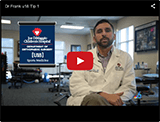 View more
View more -
Segment U18 Tip with Dr Frank 1
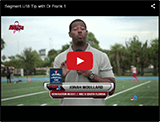 View more
View more -
Dr. Frank’s 2010 WQAM high school football game halftime interviews
View more

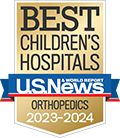


 Menu
Menu






 In The News
In The News Hollywood Office
Hollywood Office

![[U18] Sports Medicine](https://www.kidbones.net/wp-content/themes/ypo-theme/images/u18-sports-medicine-performing-arts-logo.png)
